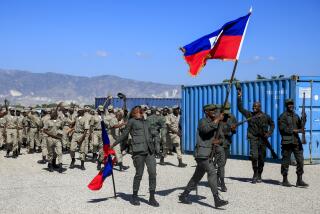At Sao Paulo’s police academy, cadets prepare for an unpopular job
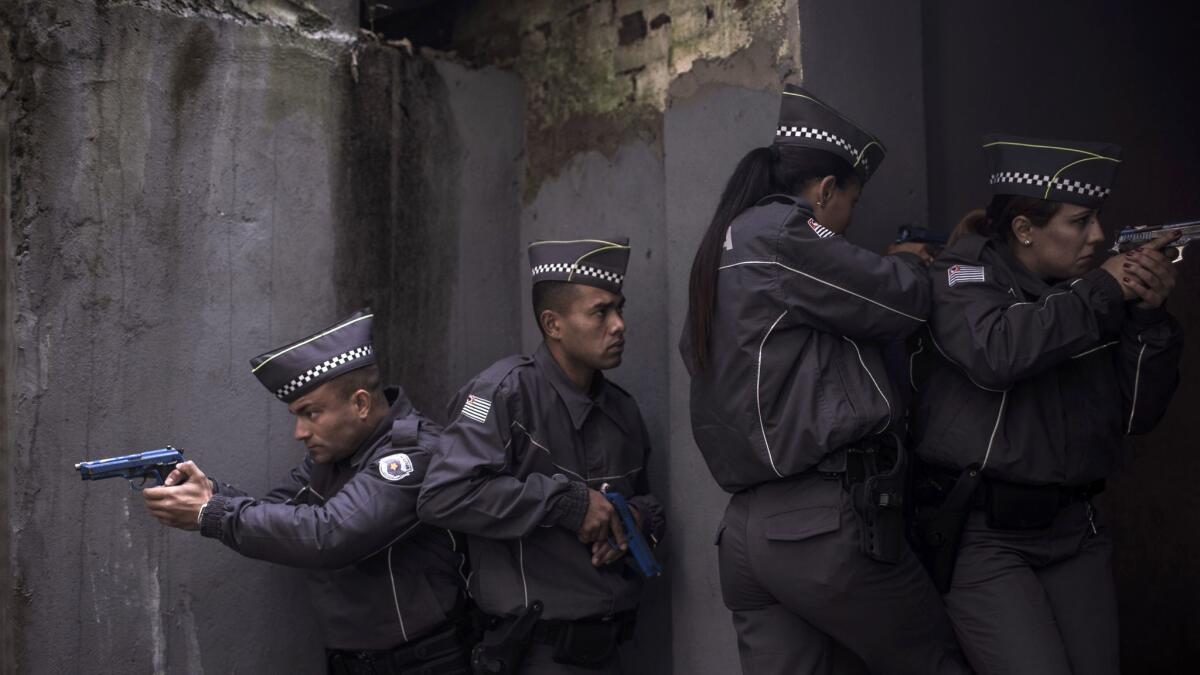
- Share via
Reporting from Sao Paulo — Brazil’s military police force is one of the country’s least respected institutions. Forged during the dictatorship that ended in 1985, it is charged with preventing crime. But it has become better known for committing it.
The 100,000 or so officers who patrol the streets of Sao Paulo killed 430 people in the first six months of this year, and two officers are currently on trial for participating in a 2015 shooting massacre of 17 people.
A recent poll showed that 62% of citizens fear violence by the force — up from 48% five years ago.
None of that seems to be on the minds of the 21 men and 5 women gathered in a circle at Sao Paulo’s Superior School for Soldiers, where each recruit to the force is required to complete 1,983 hours of training over the course of a year before being assigned to the streets.
The 26 cadets wear shiny black shoes, ironed gray trousers and shirts and garrison caps. It is morning, time for the day’s first class: Standard Operational Procedures.
The lesson is how to enter a locked building with hostages inside.
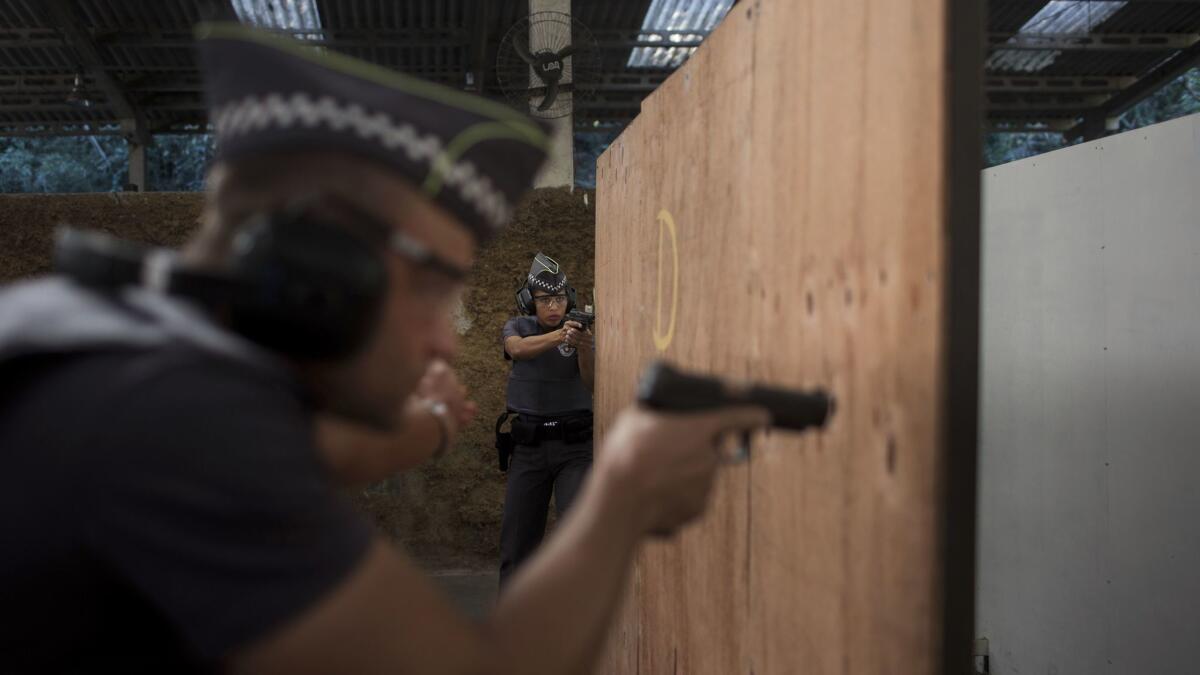
It takes place in a small cement structure. The instructor, Lt. Thacio Cardoso, explains the procedure: Throw a flash-bang grenade through the open plywood door to distract the suspect, then storm the building in a team of five to arrest an imaginary suspect and rescue an imaginary hostage.
The cadets carry bright blue fake guns, which are to be drawn, but only “fired” as a last resort.
When the instructor asks for five volunteers, all the cadets raise their hands. He selects three men and two women and hands one of them a bulletproof shield to lead the way inside. Another cadet gets a wooden battering ram.
Cardoso holds up a white grenade and explains that he’s about to throw it through the open plywood door.
“I hope it’s not like when we had to get pepper-sprayed in the face,” one cadet says. “I think my eyes still burn from that day.”
The group backs up several steps, some cadets squinting, others covering their ears. There’s a flash and an ear-piercing bang.
Everyone braces themselves when he throws in a second grenade. It hits the floor and rolls, but the only sounds are leaves rustling and a bird chirping. It’s a dud.
“I don’t think this has ever happened,” Cardoso explains with a laugh.
He sends a cadet up the hill to the academy’s main building to ask for a gun with rubber bullets to deactivate the grenade before picking it up.
“I guess this is a good teaching moment too,” he says.
The cadet comes running back with a rifle and hands it over. Cardoso slides metal bullets out of the gun and into his hand.
“What is this?” he asks. “You brought me a gun with real bullets? He handed you this gun? Go back up there and tell him I need rubber bullets. Is he trying to kill us?”
Cardoso shakes his head. When the recruit returns, out of breath, the instructor removes a bright yellow rubber bullet and holds it between his index finger and thumb.
“This is what I asked for,” he says.
He goes into the building, aims at the grenade and fires.
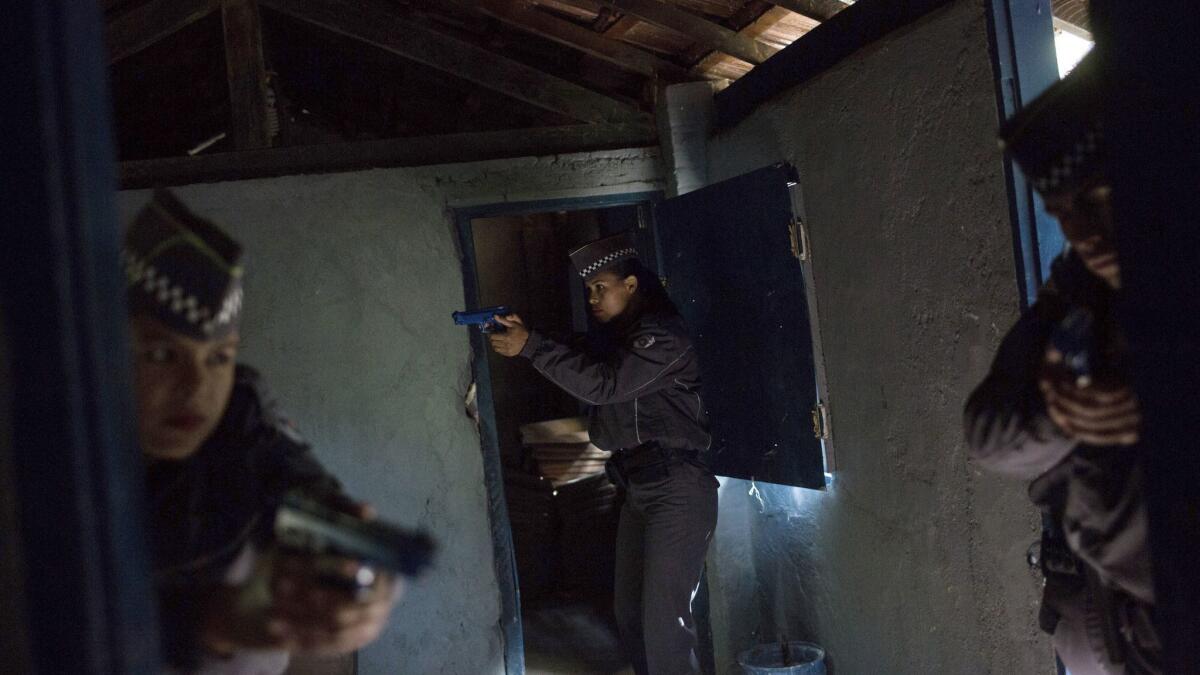
Lunch is in the mess hall — beef stroganoff, salad and the Brazilian staple of rice and beans.
Afterward, the cadets gather on a patio to run through salutes and other drills and receive instructions for their afternoon classes.
Some groups file into classrooms in the single-story buildings that surround the patio training in psychology, criminal law or human rights. The 26 who spent the morning rescuing hostages head off to firearms training.
In the open-air shooting range, afternoon sunlight peeking below the raised tin roof, the cadets put on their bulletproof vests and hearing-protection earmuffs. Cpt. Edson Garnica teaches the students how to load their guns.
The first volunteer, 27-year-old Daiane Paixao, is paired with another cadet. They each get into position on opposite sides of a mock-up street of narrowly spaced houses. Their knees are bent and backs curved forward, pistols in their outstretched hands to protect each other.
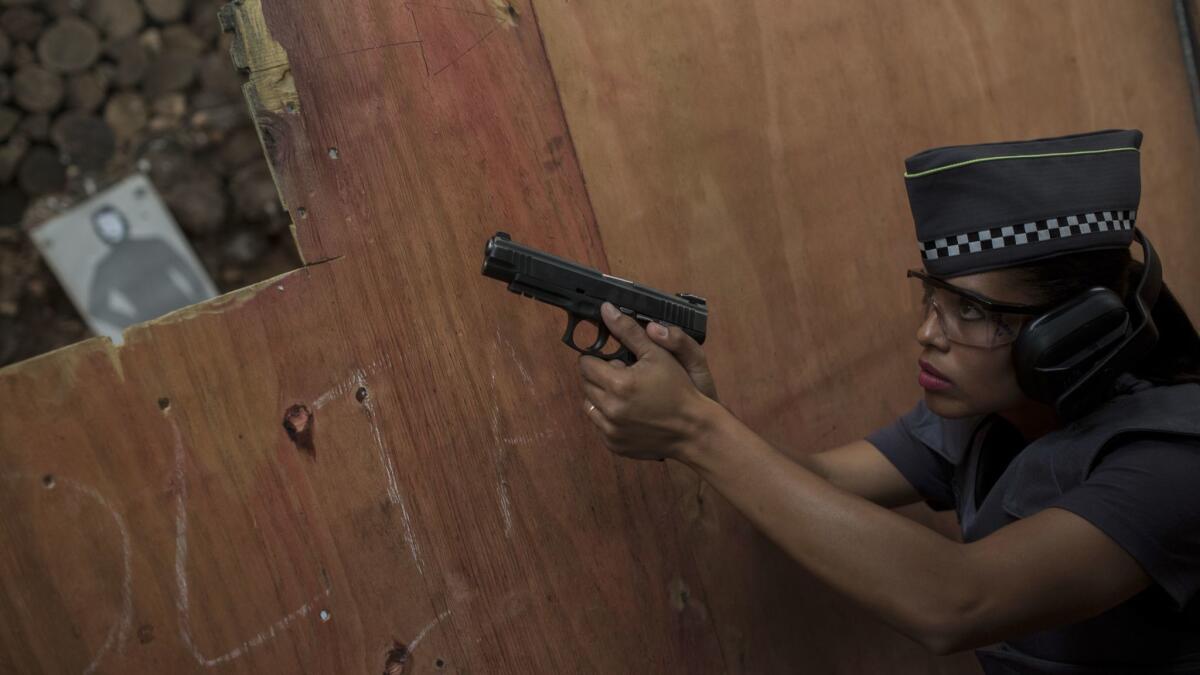
Garnica coaches them through each step, shouting over the gunfire from the neighboring shooting range.
“Never cross one foot over the other when you’re after a suspect,” he says. “You want to make sure you’re firm on your feet. You don’t want to have to worry about being knocked off balance.”
Paixao nods, her eyes still fixed in front of her as she leans to the side to look around a corner.
“Yes sir.”
When she reaches the end of the fourth and last plywood wall, she stops at what is meant to be a window, ready to take aim at one of several targets pinned to a wall made of tree trunks. Some of the drawings are meant to be hit, obvious “bad guys” with guns in hand. Others — of civilian targets including children — should be avoided.
Paixao takes aim and pulls the trigger. The muzzle flashes. She backs away from the window and turns to her left. There are two more targets around the corner — one wearing dark sunglasses and holding a pistol at his waist, the other holding a young girl in front of him as a shield, a knife to her neck. Paixao glances to the side.
“Never take your eye off the suspect,” Garnica tells her. “It’s your life on the line.”
She looks back at the image of the man holding a gun, steadies herself and squeezes the trigger. Garnica walks over to the paper target to get a closer look at where the bullet pierced.
“Not bad,” he says. “Right through the arm.”
Paixao gets several pats on the back as she walks over to her fellow cadets. Garnica surveys the group. In a handful of months, these recruits will be patrolling the streets alongside him.
“Who’s next?”
The rest of the cadets put their hands in the air.

Langlois is a special correspondent.
More to Read
Sign up for Essential California
The most important California stories and recommendations in your inbox every morning.
You may occasionally receive promotional content from the Los Angeles Times.

